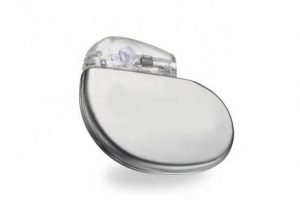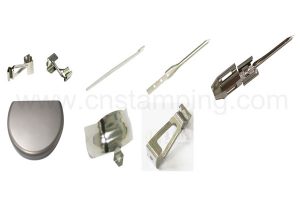Common Implantable Medical Devices
What are Implantable Medical Devices?
Implantable medical devices are electronic devices embedded in organisms or humans and have important medical functions. Implantable medical devices can transmit patient data to external devices in WBAN (wireless personal network). And then transmit it to large hospitals, professional medical centers, and other platforms through mobile Internet, providing remote monitoring and diagnosis for patients with various chronic diseases such as diabetes, hypertension, heart disease, etc.. And also providing data support for the formulation of scientific treatment plans.
What are the Common Implantable Medical Devices?
Currently, the main implantable medical devices include cardiac defibrillators, pacemakers, cochlear implants, insulin pumps, medication systems, brain nerve stimulators, and monitoring systems.
Implantable Cardiac Defibrillator

A cardiac defibrillator, also known as a cardiovertor. It is a medical electronic device that uses electric shock to rescue and treat arrhythmias. A cardiac defibrillator uses a pulsed current to act on the heart to restore sinus rhythm. It is one of the most widely used rescue devices in clinical practice.
Implantable Pacemaker

A pacemaker is an electronic therapeutic device implanted in the body. It emits electrical pulses powered by a battery through a pulse generator. The conduction of wire electrodes stimulates the myocardium that the electrodes contact, causing the heart to become excited and contracted, thereby achieving the purpose of treating heart dysfunction caused by certain arrhythmias.
Cochlear Implants
A cochlear implant is an implantable electronic hearing device designed to help people with severe or profound sensorineural hearing loss develop a sense of hearing by electrically stimulating the nerves in the inner ear.
The increasing prevalence of ear infections and prelingual hearing impairment will drive the continued expansion of market demand. The increase in regulatory approvals and the launch of various hearing aid products will likely drive the market to grow at a compound annual rate of 9.86% between 2017 and 2023.
Medication System
Medication systems generally use implanted devices to deliver drugs slowly and regularly, releasing drugs directly to the optimal physiological site. Such devices are generally controlled and powered by electronics and long-life power supplies, forming a “drug channel” in the human body. “.
Among them, the most significant application of this technology is the insulin pump for the treatment of diabetes. It has the advantages of reducing the side effects of conventional treatments and better controlling physiological parameters such as blood sugar. An insulin pump is a medical device used to regulate insulin in diabetes treatment. People also calll it as a continuous subcutaneous insulin infusion treatment device. In addition, implantable drugs for the treatment of epilepsy and infusion systems for subcutaneous implants are also important applications of drug therapy systems.
Neurostimulator
The implantable neurostimulator is an emerging digital therapeutic device. According to the target of the action, the implantable neurostimulator includes:
- Deep brain stimulation.
- Spinal cord stimulation.
- Vagus nerve stimulation.
- Sacral nerve stimulation.
- Phrenic nerve stimulation.
- Other treatment modes.
According to the treatment of diseases, the implantable neurostimulator has great clinical therapeutic significance for Parkinson’s disease, pain, epilepsy, bladder dysfunction, respiratory dysfunction, hypertension, obesity and other diseases.
Monitoring System
According to reports from Artery Network, the main functions of implantable monitoring systems are to monitor the heart, blood pressure, and blood sugar index.
Implantable heart monitors can help doctors remotely measure blood pressure fluctuations in patients’ pulmonary arteries through implanted devices and adjust drug dosages accordingly.
And implantable blood sugar monitors can replace frequent and painful needle tests. After connecting to a smartphone, the monitoring device can transmit blood sugar data to the smartphone. If patients have problems with their blood sugar, they can receive an alert on their phone and take insulin to lower their blood sugar or take sugar supplements to raise their blood sugar, depending on the situation.
China’s Leading Manufacturers of Implantable Medical Devices
With an increasing prevalence of chronic, age-related health conditions, fast-paced growth in the medical device industry has been observed globally. Some newly emerging technologies, including cloud computing, the Internet of Things (IoT), and artificial intelligence, have contributed significantly to the advancement of the medical device industry.
Heju Stamping has over 30 years of experience in the manufacturing of precision medical metal stamping parts. Such as Implantable Pacemaker Enclosures, Blood Glucose Lancets. Certified by ISO9001 and ISO13485, we have expertise in medical devices stamping parts and their related requirements. Additionally, we are proficient in the handling of medical-grade metal. And the precise cleaning and packaging requirements required by our medical customers.
Do you want to learn more about our medical capabilities? Please get in touch with us today.
